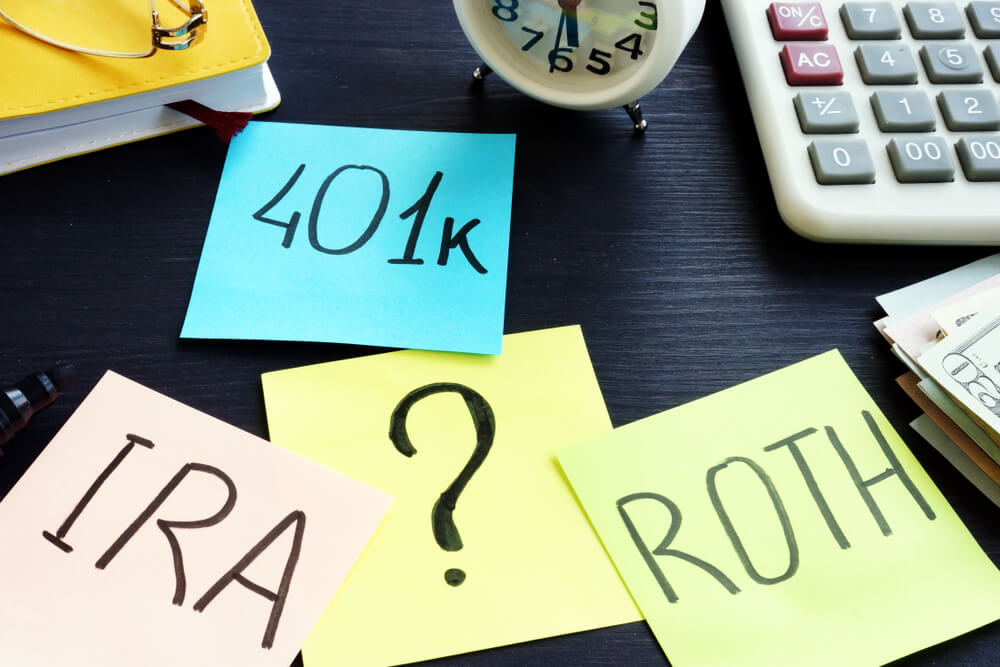If you are saving for retirement, you probably know about the 401(k) and the Roth IRA too. But are you familiar with a Roth 401(k)?
It’s a bit of a mashup — a Roth product available through your traditional 401(k). It allows people to save after-tax money through their workplace plan that can then be withdrawn tax-free in retirement. Although it has been around for years, its availability has picked up steam of late.
There’s no exact measure of how many plans provide it. But nearly 85% of mid-size and large employers had a Roth offering in their defined contribution plan in 2018, according to a survey by consulting firm Callan. That’s up from nearly 62% in 2015. Adoption by employees remains fairly low, in part because of a lack of awareness.
Should you consider one? A few things to know:
DEFINITION
A 401(k) is an employer-sponsored retirement plan that allows workers to set aside pretax money from their paycheck for retirement. Some employers will match contributions up to a certain level. Because the money that goes in isn’t taxed, it is taxed when withdrawn.
A Roth IRA, on the other hand, is an individual retirement plan that is typically established outside of the workplace, such as through a bank or investment firm. The money that goes in has already been taxed, so the withdrawals during retirement are tax free.
The Roth 401(k) combines components of both, allowing it to be established within a workplace plan but with many perks of a Roth.
TAXES
A key benefit of a Roth 401(K) is that it provides tax-free income during retirement.
In general, that means those who stand to benefit most are those whose tax bracket may be higher in retirement than it is now. That would include young workers with earning potential or even people who stand to have a large inheritance later on.
“The longer your time horizon, the more uncertainty you have so the idea of paying it (taxes) now is more attractive,” said Nathan Voris, managing director of business strategy for Schwab Retirement Plan Services.
However, some people may simply want to hedge their bets given that they don’t know what may happen to taxes in the future.
Take for example, today. Tax rates are very low as a result of the recent tax law overhaul. But some of the law’s provisions are scheduled to sunset in a few years and people’s tax brackets may change. Additionally, there is no way to tell what may happen to tax law under subsequent administrations.
Aside from a crystal ball, Nathan Fisher, founder of Fisher Investments 401(k) Solutions, suggests consulting a tax adviser.
CONTRIBUTIONS
Another perk — anyone can participate in a Roth 401(k) who has access to it.
A Roth IRA has income limits, only those who earn up to $137,000 can contribute this year (or $203,000 for those who are married and file jointly). But there are no income limits on a Roth 401(k).
The contribution levels are different as well. This year, you can contribute up to $6,000 in a Roth IRA. But you can contribute up to $19,000 in a 401(k) and Roth 401(k) combined for the year. Higher levels apply to both for those over age 50.
Take note that employer contributions might not apply to the Roth 401(k) but only to the traditional 401(k).
WITHDRAWALS
You can withdraw the money tax free but there are some wrinkles to be aware of.
One benefit of a Roth IRA is that they are not subject to required minimum distribution. An RMD, as they are known, is what the government requires that people withdraw from certain retirement accounts once they reach 70 1/2 years of age. But Roth 401(k)s are typically subject to RMD and this is important as people work longer, potentially forcing them to draw some of their savings before they want to.
However, you can also move the money to a Roth IRA when you retire, which means there would be no RMD.
To make a “qualified” withdrawal from a Roth 401(k) you must have contributed to the account for at least five years and be either 59 ½ years old, disabled or deceased. The funds would go to the beneficiaries of the deceased.
If someone wanted to tap their funds early, they would be subject to taxes. But a participant could, if their plan allows, take a loan out against it.
© The Associated Press. All rights reserved.
